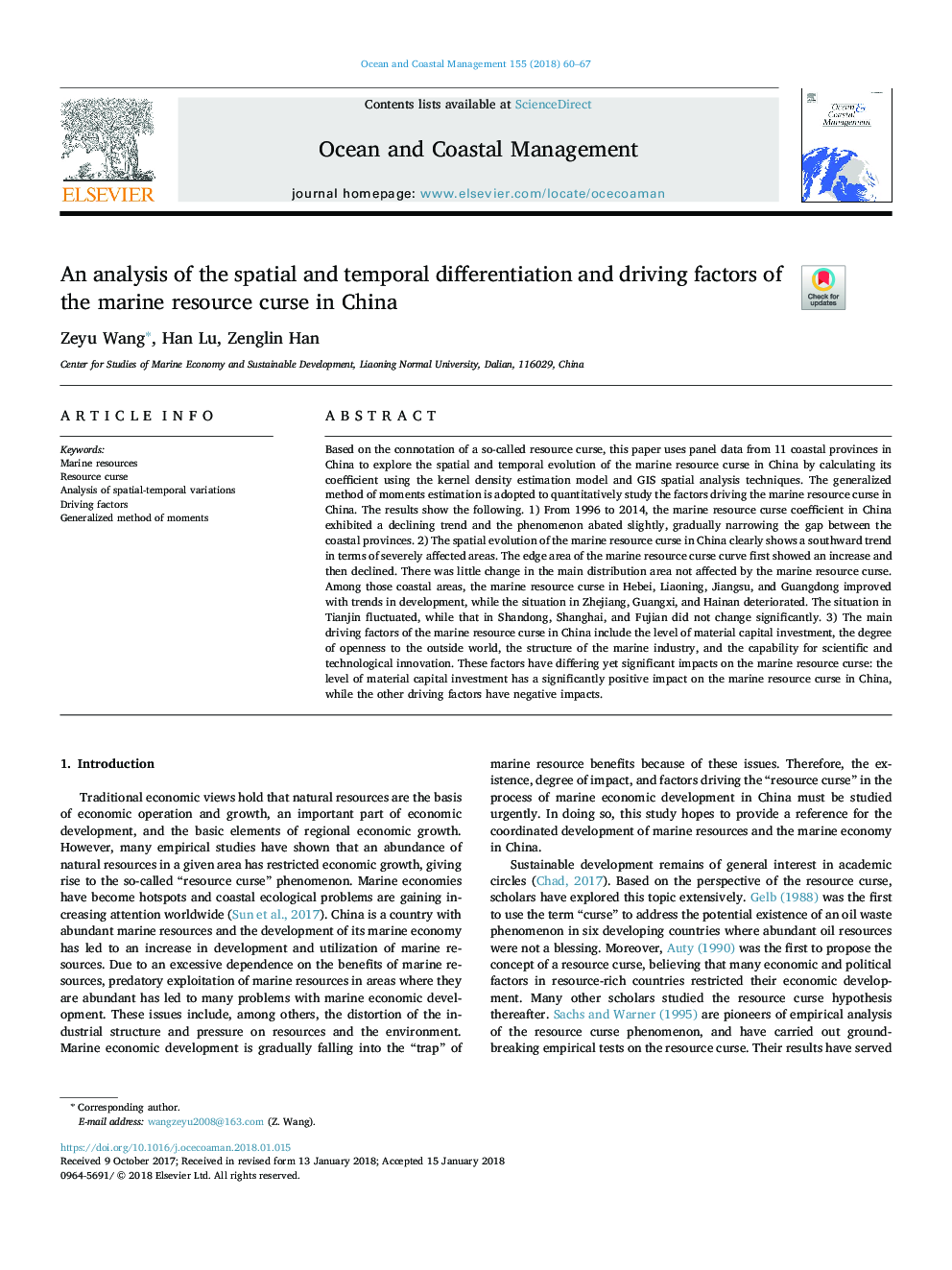| Article ID | Journal | Published Year | Pages | File Type |
|---|---|---|---|---|
| 8060812 | Ocean & Coastal Management | 2018 | 8 Pages |
Abstract
Based on the connotation of a so-called resource curse, this paper uses panel data from 11 coastal provinces in China to explore the spatial and temporal evolution of the marine resource curse in China by calculating its coefficient using the kernel density estimation model and GIS spatial analysis techniques. The generalized method of moments estimation is adopted to quantitatively study the factors driving the marine resource curse in China. The results show the following. 1) From 1996 to 2014, the marine resource curse coefficient in China exhibited a declining trend and the phenomenon abated slightly, gradually narrowing the gap between the coastal provinces. 2) The spatial evolution of the marine resource curse in China clearly shows a southward trend in terms of severely affected areas. The edge area of the marine resource curse curve first showed an increase and then declined. There was little change in the main distribution area not affected by the marine resource curse. Among those coastal areas, the marine resource curse in Hebei, Liaoning, Jiangsu, and Guangdong improved with trends in development, while the situation in Zhejiang, Guangxi, and Hainan deteriorated. The situation in Tianjin fluctuated, while that in Shandong, Shanghai, and Fujian did not change significantly. 3) The main driving factors of the marine resource curse in China include the level of material capital investment, the degree of openness to the outside world, the structure of the marine industry, and the capability for scientific and technological innovation. These factors have differing yet significant impacts on the marine resource curse: the level of material capital investment has a significantly positive impact on the marine resource curse in China, while the other driving factors have negative impacts.
Related Topics
Physical Sciences and Engineering
Earth and Planetary Sciences
Oceanography
Authors
Zeyu Wang, Han Lu, Zenglin Han,
